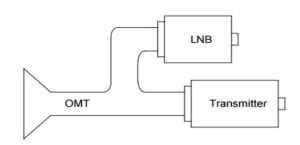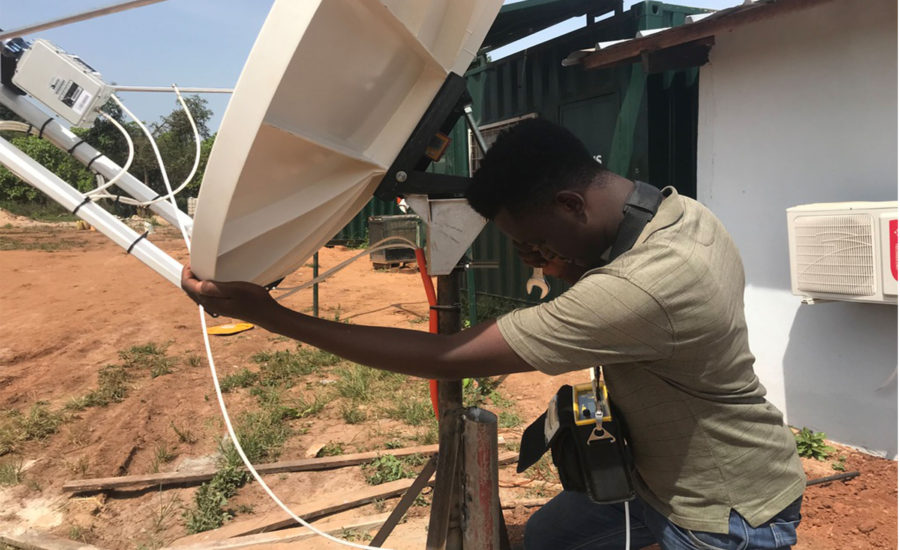These Are The Basics You Need To Do a VSAT Installation
VSAT stands for Very Small Aperture Terminal; it is a satellite communication equipment that is used to transmit and access signals from the specific orbital satellite it is pointed to.
With VSAT, the satellite network configuration can be of two types namely Star Topology (Hub Type) and Mesh Topology (Hub-less Type). The star topology interlinks all Terminals via a central hub it is typically used for Head Office-Branch office scenario where all the branches need to communicate with the head office while the Mesh Topology terminals can communicate with each other via the satellite without going through a central hub.

VSAT type also varies by frequency, it could be C-Band, Ku-Band, Ka-Band, etc. VSAT technology can be used for the broadcast and reception of television signals or Internet access, file distribution, and Distance Learning.
Regardless of the Topology or the Frequency you choose, the VSAT installation procedure is the same thing.
A VSAT configuration will normally have 3 constituent parts: Reflector Antenna & Support arms, The Transreciever Assembly (Feed Horn, LNB and BUC plus OMT ), and Indoor Unit. OMT stands for orthomode transducer it is the joint where the transmit and receive waveguides join.
Assemble the dish – for the assembly, you have to refer to the installation guide of the specific dish type of your service provider company but the general procedure would be to attach the dish mount to the reflector and fasten the nuts, then you attach the feed support rod/LNB arm to the dish and tighten the nuts.
Mount dish on a pole – select a visible outdoor location with a clear view towards the satellite and mount on the dish on the pole. The dish pole must be installed vertically and it is important to have a clear view as obstructions like trees and buildings may affect signal quality.
Transceiver assembly – Install the LNB, BUC, OMT, and on the horn arm and ensure the LNB tilt is at the angle specified by your service provider.

Your dish must be properly earthed to avoid the buildup of static electricity and equipment damage.
IFL Cables – Two properly crimped RF coax cables would be plugged into the Transceiverver Unit one cable for the LNB and the other for the BUC. It also depends on the equipment type of your service provider. You could see TX, RX which makes it easy so you connect Tx on Transreciever to TX on the modem and RX on the transceiver to RX on the modem but if they don’t make it easy for you the TX coax cable goes to the BUC and the RX goes to the LNB. Once again the antenna structure should be properly earthed.
Power Up – When all connections are done properly, plug the Ethernet cable from satellite modem to your PC and plug the power pack into the satellite modem then power up.
Final Configuration – the final configuration is done on your PC and its instruction varies from service provider to service provider but it generally involves opening up your Internet Browser and entering the web address given to you by your provider where you can do satellite tracking and activate your internet plan.
Satellite tracking – To acquire and track a satellite in space, you must verify that you have very accurate pointing data and parameters like Azimuth value, Elevation Angle, LNB tilt/skew. The dish pointing parameters of azimuth and elevation needs to be near perfect and the LNB tilt is feed rotation polarization.
Azimuth and elevation are the two coordinates that define the position of a celestial body (sun, moon, or satellite) in the sky while you are observing from a particular location on earth.
![]()
- Azimuth refers to the direction your dish should point. Using there North as a reference, the azimuth is the angle between the Satellite and the North pole while moving in a clockwise direction.
- Your elevation is how far above the horizon your satellite dish needs to point (up and down).
- Polarization also known as “skew”, refers to the adjustment needed for the curvature of the Earth. This rotational adjustment compensates for the Earth’s curvature between the dish and the beam of the satellite.
In conclusion, mastering satellite tracking azimuth and elevation requires practice and real-life examples. If you need more help or require a VSAT Installation Service, Global IT Firm is here for you.





I am incessantly thought about this, thanks for posting.
I reckon something truly special in this website.
Thanks-a-mundo for the blog.Really thank you! Want more.
You are a complete genius, I’ve just learnt a lot. Please keep it up
A lot of blog writers nowadays yet just a few have blog posts worth spending time on reviewing.
My website: мжм русское домашнее русское порно